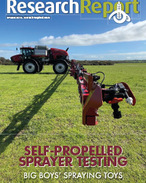This article is 4 years old. Images might not display.
These provisions came into effect from 1 July last year as part of the Prevention of Cruelty to Animals (POCTA) Regulations 2019.
The requirement to use a registered pain relief product not only ensures better animal welfare outcomes for Victorian sheep, but it also helps to protect the reputation of Victoria's sheep industry.
Agriculture Victoria program manager Livestock Welfare Compliance, Rachael Holmes said only pain relief products that are registered for use on sheep by the Australian Pesticides and Veterinary Medicines Authority (APVMA) can be used when mulesing.
"As with any agricultural or veterinary chemicals used on farm, producers should keep records of the pain-relieving products used," Holmes said.
"Details should include the product trade name, species/location of animals, identification numbers/description, the date the treatment has been applied and the dose rate used."
Dr Holmes said that there are a number of pain relief products available to producers for not only mulesing but for marking lambs in general.
"Producers need to be aware of advantages and disadvantages of the available pain relief products and the type of pain they are targeting and consider the best fit for their operation to achieve the desired results. Producers are best to discuss this with their veterinarian.
"The use of pain relief products during the mulesing/marking procedure ensure Victoria's sheep industry operating best-practice welfare and supports the sustainability of our industry," Dr Holmes added."
Victoria's Code of Accepted Farming Practice for the Welfare of Sheep (Revision Number 2) is also available to provide a technical guide for those using mulesing as part of a flystrike management program.
"If undertaken, mulesing should only be done as part of an integrated approach to flystrike management including crutching and shearing, good worm control, strategic use of chemicals, genetic selection of sheep and paddock grazing management," she said.
For more information visit https://bit.ly/3eQqsZt























